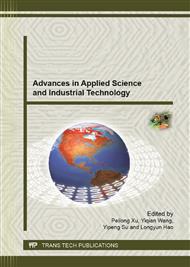p.603
p.608
p.614
p.620
p.624
p.630
p.634
p.638
p.643
Auto-Layering Wavelet Transfer to Remove the Circumstance Effect and Noise
Abstract:
The accuracy of visibility measurement from night light sources image is usually affected by the circumstance light and noise. This paper presents an auto-layering wavelet transfer method to remove the circumstance effect and noise simultaneously. Firstly, the light propagation through the fog at night condition is formulized, where the model and features of night image with circumstance effect and noise is given. Secondly, we propose to use multi-scale features of wavelet transfer to decompose the image to remove the circumstance effect and noise, where an auto-layering method is used based on the energy ratio of wavelet coefficients. Experiments show that our method is able to remove the circumstance effect and noise simultaneously and to adjust the decomposed layering number automatically. Our method is not only suitable for many wavelet functions, but also preserves the light sources as well as their glows in the digital images. The relative error of using db4 is 3.16%, and the relative error of using sym2 is 2.02%.
Info:
Periodical:
Pages:
624-629
Citation:
Online since:
September 2013
Authors:
Keywords:
Price:
Сopyright:
© 2013 Trans Tech Publications Ltd. All Rights Reserved
Share:
Citation:


